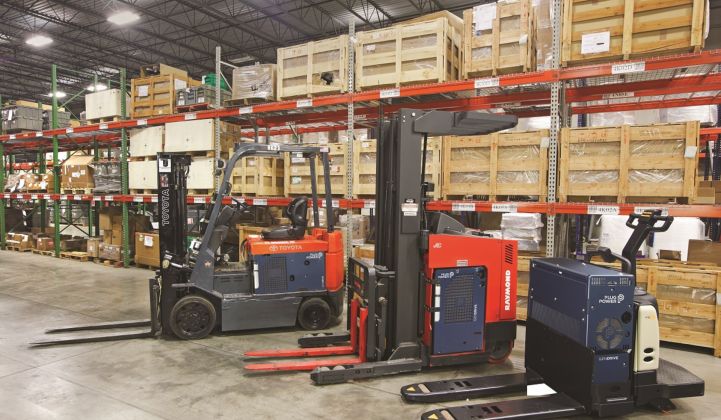Plug Power has raised $1.5 billion from South Korea’s SK Group, to be used for boosting hydrogen fuel cells and green hydrogen electrolyzers as a cleaner source of energy for transport and industry throughout Asian markets.
Wednesday’s announcement marks the second massive investment in the past three months for the Latham, New York-based maker of fuel cells for forklifts and other work vehicles, as it seeks to capitalize on a global boom in investment in hydrogen generated from clean power as a replacement for fossil fuels.
In November, Plug Power raised $1 billion in a bought equity transaction to fund an expansion of its fuel cell and electrolyzer manufacturing capacity, and to build five large-scale green hydrogen production stations across the U.S.
But policy support for green hydrogen in the U.S. is not nearly as developed as it is in other parts of the world with more aggressive decarbonization goals. That includes the European Union, which has set a target of 40 gigawatts of green hydrogen electrolyzers by 2030.
That also includes South Korea, whose 2019 “hydrogen economy” plan calls for 15 gigawatts of fuel cell production capacity by 2030 and for the country to become the world’s top maker of hydrogen-powered cars by decade’s end, with the commensurate refueling infrastructure to support their domestic use.
Over the past decade, South Korean companies have formed partnerships with U.S. fuel cell makers including Bloom Energy, FuelCell Energy and United Technologies — not all of them successful over the long run. But SK Group’s investment in Plug Power is much larger than these past agreements, Jeffrey Osborne, an analyst with Cowen & Co., said in a Wednesday note to investors.
Plug Power CEO Andy Marsh said in a Wednesday statement that the relationship with SK Group “offers immediate strategic benefits” to expand into Asian markets and is intended to yield a formal joint venture by 2022.
Green hydrogen growth plans
“We expect rapid growth and significant revenue generation from the joint venture that are incremental to our 2024 plan,” he said. Plug Power uses about 20 tons of liquid hydrogen per day to fuel the roughly 40,000 fuel-cell-powered forklifts in use by customers including Amazon, Walmart, DHL and Home Depot.
By 2024 it’s targeting another 85 tons per day of production capacity, 25,000 fuel cell units a year and $1.2 billion in annual sales. Its $1 billion raise in November will be used for opening a massive factory, expected to begin operation in 2021 in Rochester, N.Y., that will allow it to produce 1.5 gigawatts of fuel cells and about 500 megawatts of electrolyzers per year.
Fuel cells have fallen far behind batteries as the technology of choice to replace fossil fuels in most vehicles in the nascent clean transportation sector, given the relative challenges of creating a fueling infrastructure to supply hydrogen as opposed to electricity. But fuel cells have taken off in the forklift market, largely because they are faster to refuel and can run longer than battery-powered models, a critical feature for businesses that rely on near-constant uptime for work vehicles.
Plug Power wants to expand to other work vehicles, such as freight movers serving ports in the U.S. and Europe. It’s also working on stationary fuel cells to power data centers and distribution hubs, where it would take on competitors such as Bloom Energy and FuelCell Energy.
But for fuel cells to reduce overall carbon emissions, the industry will need to switch from converting fossil fuels to hydrogen — the source of the vast majority of the gas today — to creating it via electrolysis of water using renewable energy.
Green hydrogen costs three to four times as much to produce today as the dominant “gray hydrogen” alternative, which uses steam reforming of natural gas. But large-scale investments in Europe and Asia could bring it within cost parity by 2030, according to Wood Mackenzie and other analyst firms.
Hitting cost parity will require significant cost reductions in clean power supply, cost reductions and efficiency improvements in electrolyzer technologies, and economies of scale in production and transport. It will also require a build-out of the infrastructure for using hydrogen as a replacement fuel, whether that’s for transportation, chemical production or as a replacement for natural gas in electricity generation and building heating.




